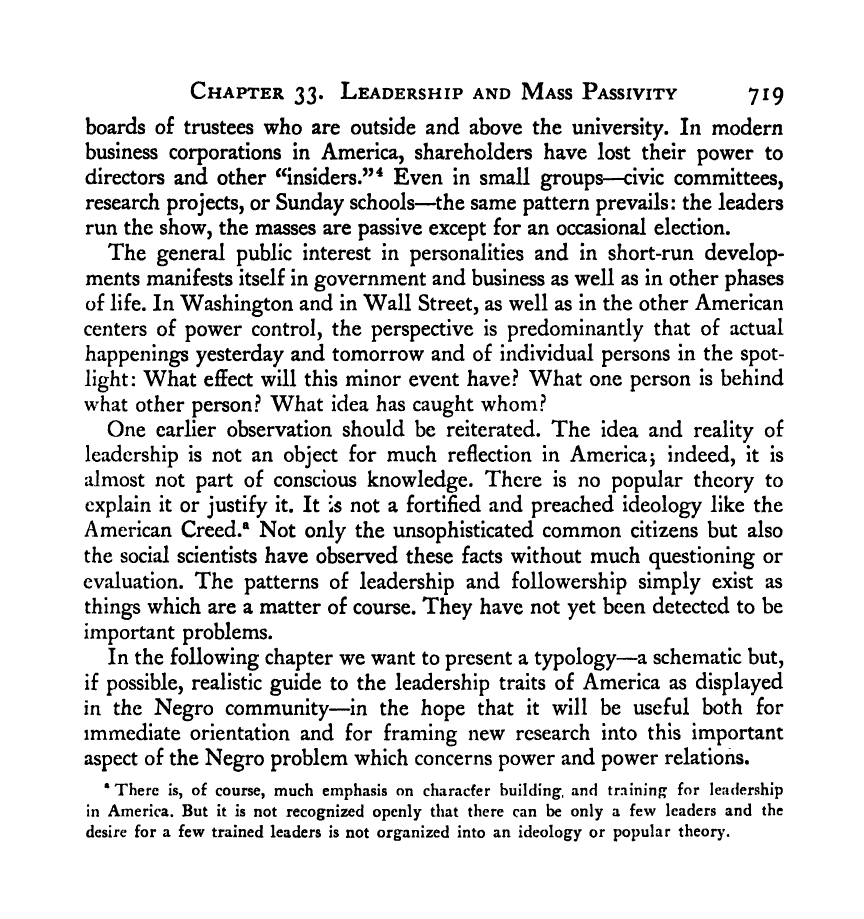Note: Gunnar Myrdal died in 1987, less than 70 years ago. Therefore, this work is protected by copyright, restricting your legal rights to reproduce it. However, you are welcome to view it on screen, as you do now. Read more about copyright.
Full resolution (TIFF) - On this page / på denna sida - IX. Leadership and Concerted Action - 33. The American Pattern of Individual Leadership and Mass Passivity - 4. The Patterns Exemplified in Politics and throughout the American Social Structure

<< prev. page << föreg. sida << >> nästa sida >> next page >>
Below is the raw OCR text
from the above scanned image.
Do you see an error? Proofread the page now!
Här nedan syns maskintolkade texten från faksimilbilden ovan.
Ser du något fel? Korrekturläs sidan nu!
This page has never been proofread. / Denna sida har aldrig korrekturlästs.
Chapter 33. Leadership and Mass Passivity 719
boards of trustees who are outside and above the university. In modern
business corporations in America, shareholders have lost their power to
directors and other ^^nsiders.”^ Even in small groups—civic committees,
research projects, or Sunday schools—^the same pattern prevails: the leaders
run the show, the masses are passive except for an occasional election.
The general public interest in personalities and in short-run develop-
ments manifests itself in government and business as well as in other phases
of life. In Washington and in Wall Street, as well as in the other American
centers of power control, the perspective is predominantly that of actual
happenings yesterday and tomorrow and of individual persons in the spot-
light: What effect will this minor event have? What one person is behind
what other person? What idea has caught whom?
One earlier observation should be reiterated. The idea and reality of
leadership is not an object for much reflection in America j
indeed, it is
almost not part of conscious knowledge. There is no popular theory to
explain it or justify it. It ;s not a fortified and preached ideology like the
American Creed.® Not only the unsophisticated common citizens but also
the social scientists have observed these facts without much questioning or
evaluation. The patterns of leadership and followership simply exist as
things which are a matter of course. They have not yet been detected to be
important problems.
In the following chapter we want to present a typology—a schematic but,
if possible, realistic guide to the leadership traits of America as displayed
in the Negro community—in the hope that it will be useful both for
immediate orientation and for framing new research into this important
aspect of the Negro problem which concerns power and power relations.
* There is, of course, much emphasis on character building, and training for leadership
in America. But it is not recognized openly that there can be only a few leaders and the
desire for a few trained leaders is not organized into an ideology or popular theory.
<< prev. page << föreg. sida << >> nästa sida >> next page >>